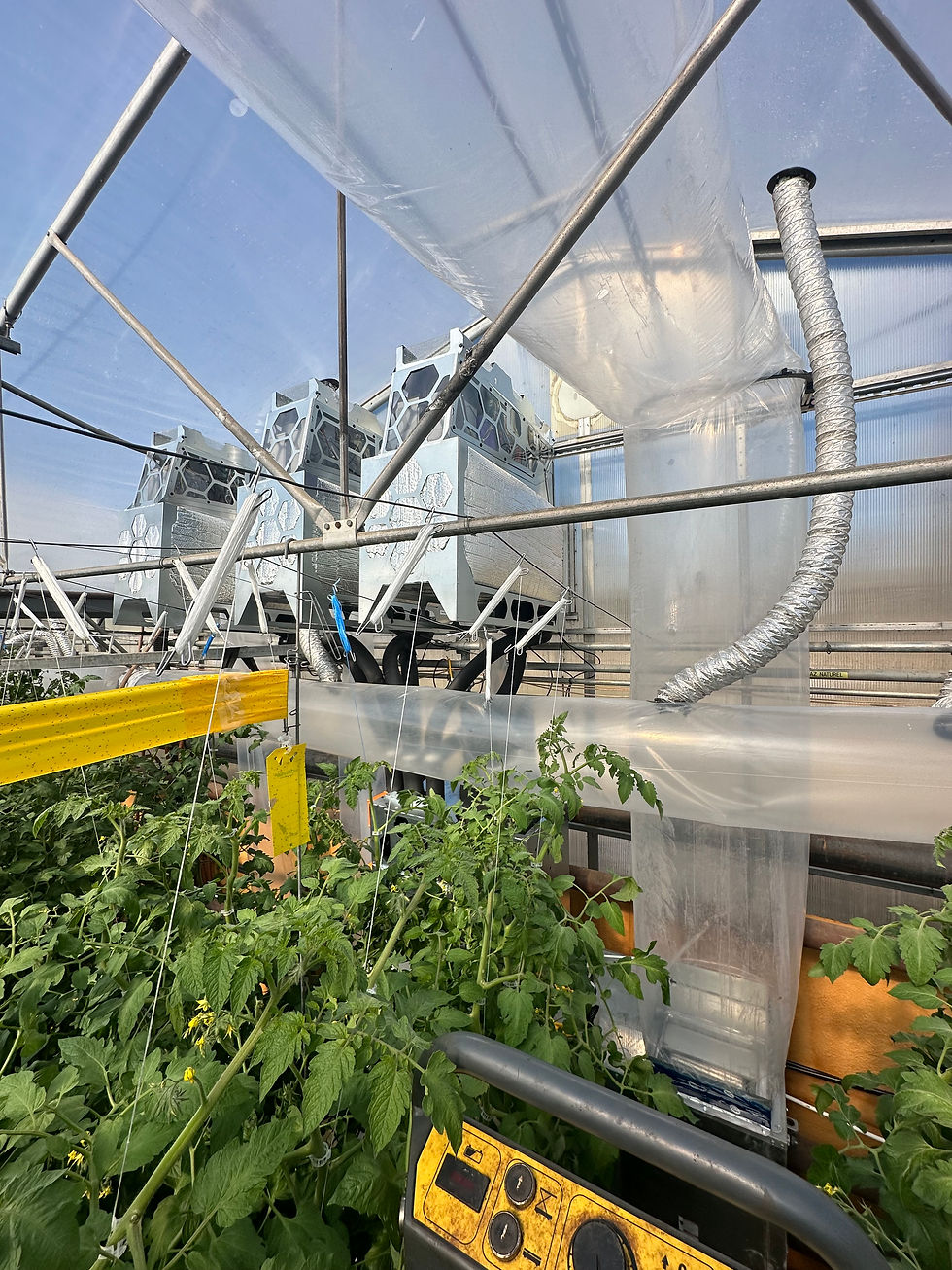Commercial showcase in the Laurentians
Challenges:
Climate Uniformity: In greenhouses, it is difficult to maintain optimal humidity levels consistently on a large scale.
Complexity of climate management: Existing systems lack precision and responsiveness, generating high energy costs, particularly for heating and dehumidification.
Technical issues: Initial design of dehumidification modules in barrels that deform over time. Difficulty in maintaining the robustness of the nozzles and managing the plumbing.
Difficulty in manufacturing parts: Internal production with 3D printers generated several failures and delays in the manufacturing process of Dahlias modules.
Solutions:
Technical improvements:
Hardware design overhaul for better performance
Optimization of the ecosystem with adjustments to the plumbing and the addition of sensors for better water management.
Moving from LTE to Wi-Fi to improve communication between our hardware and software.
Design Innovation: Transition to a more compact model that is better suited to greenhouse space. This has improved efficiency and made installation easier.
Software and hardware ecosystem: Development of an IOT interface to centralize the collection and analysis of climate data and facilitate real-time control.
Results :
Improved performance: The installed systems have shown better than expected performance, particularly with regard to climate management.
Cost Reduction: Process optimization has reduced costs related to energy and inputs required to maintain a controlled environment.
Positive impact on crops: Climate adjustments have helped improve the environment for plants, promoting their growth and overall health.
These elements show that Muclitech has overcome several technical challenges by adjusting its prototypes and innovating in the design of its systems to improve the climate management of greenhouses.




